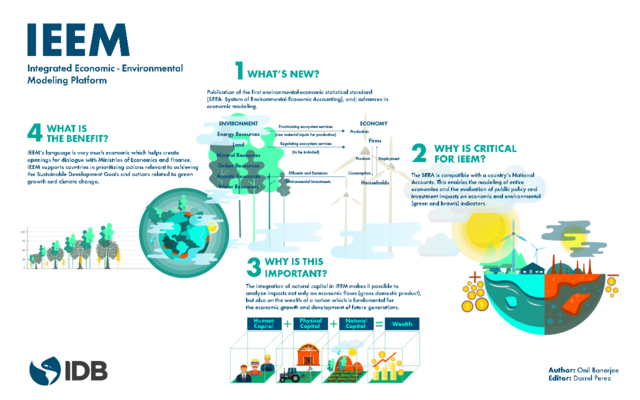IEEM: Integrated Economic-Environmental Modeling Platform
Date
Sep 2019
EDITOR
Perez, Darrel
The Integrated Economic-Environmental Model (IEEM) fills an important gap in the economic development literature and practitioner’s toolbox. At the core of IEEM is a future-looking computable general equilibrium framework that enables the analysis of the impact of public policy and investment on indicators such as Gross Domestic Product (GDP), income and employment, but also on wealth and natural capital, all in a quantitative, comprehensive and consistent framework. IEEM generates indicators that enable decision-makers to quantitatively assess strategies to achieving complex policy goals including those embodied by the Sustainable Development Goals, green growth targets and decarbonization plans. IEEM’s value-added over a conventional computable general equilibrium model include: (i) integration of rich environmental data based on the first international statistical standard for environmental-economic accounting, the System of Environmental-Economic Accounting Central Framework, into an economy-wide model; (ii) IEEM’s environmental modeling modules that capture the specific dynamics of each natural capital asset; and (iii) IEEM indicators that reflect impacts on the three dimensions of sustainable development, namely the economy, society and the environment, which are embodied in the concept of wealth.




